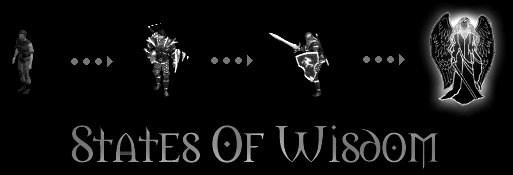
The Philosopher's Stone
Problem solving involves at least two axis of thought, lateral and vertical. By my definition, vertical thinking is usually always upwards, serialised and sequential, going from problem to answer. It is almost never downwards, and almost never down deep enough. Downwards thinking involves thinking about the problem itself, the type of problem that it is, the characteristics of all problems in general, and thinking about thinking itself. Creative people partake in lots of lateral thinking, switching from lines of thought in one vertical path to another vertical path. Schools teach vertical upwards thinking which is good enough for a basic education.
Top class thinkers think upwards, downwards and laterally; they examine the very problem itself, they think about the strategies that they think with, as far as they can. Now mathematical theory holds that even parallel lines converge at some point in infinity - and that is how philosophers hope to switch lanes in the synaptic highways of our brains. By thinking ever further downwards vertically, philosophers hope to eventually reach a point in which all lines of thought converge. If it is not a dead end, it is the lowest that anyone can ever go, the clearest that one can be regarding any problem - the simplest that one can get, but no simpler. From there they can strike out to all other lanes of thought, arriving at all the possible solutions. Sort of like physics' holy grail: a unified field theory that explains every physical law.
(Pardon me for my pop culture viewpoint of philosophy as a field - but i don't know better yet. Still working on it)
Philosophers differ from physicists and other downward thinkers in one crucial respect - they seek to get to the bottom of all things, for that is their domain. After thinking as far down as possible, they then seek the fastest path up - to reach the best possible solution. Well at least top class thinkers can do that.
Thinking downwards is to thinking upwards what machine language is to Microsoft Windows. Thinking far enough downwards allows you to eventually find the best way out of any problem you encounter. Thinking only upwards means you may solve the problem, but you may never see the limitations of your solution. Alternative paths just get more and more distant as you continue along that path.
It may be enough to solve problems by thinking vertically upwards and laterally only. But Albert Einstein said "The significant problems we face cannot be solved at the same level of thinking we were at when we created them." There is a need for people who think vertically downwards - despite what people say about it being a waste of time - in order that new paths of thinking can be mapped.
The practical value of a philosopher then, is the ability to think downwards - and to teach others to do so - in order that we may be able to find paths as short as possible to reach the top, and see where the best solutions lie. Most folks just think forwards only - and its not hard to see why. The stony ground that most issues are on make digging downwards downright difficult - and digging is always hard work in any case. And lateral thinking, that hallmark of creativity, is often enough to get by on.
-------- < Intermission > -------
The philosopher's stone, fabled thing of alchemists' desire, converts iron or lead to any element chosen. Invariably gold or platinum, there is implication of riches promised. Anyone with a slight interest in alchemy knows that it consists of a complicated series of procedures involving heating a material in a crucible. The same material is heated and then left to cool, again and again for years and years, while the alchemist watches for some change that is unknown to us. The alchemist achieves a mystical state. The alchemist learns the secrets of the universe. *We* just don't know.
" An alchemical or Hermetic journey consists of a series of operations (which may or may not have physical manifestation such as a diagram or experiment, or may be just a thought experiment), performed by the operator. The journey ends at the same place that it begins, and during the journey the operator's perception of the world is changed. The operator's consciousness has been deepened and enhanced, and it is he, not the stuff on his desk, that is transformed. The return to the beginning is necessary because it is only then that he sees that that which was obscure is now clear."
The philosopher's stone is really an arcane symbol for truth. But really really arcane, like a totally divergent path of thought. The analogy that can be made between the philosopher's stone and the philosopher's goal is just one more synchronicity, which represents two possible paths of thought that lead to a convergent point. The holy grail of alchemy, the philosopher's stone can turn ordinary elements into precious metals. The holy grail for philosophers is to understand the universe - and that is the greatest riches of all - the creation of the epiphany.  © 1998 Vertical Imagineering 'N Co. - We Engineer Epiphanies |
